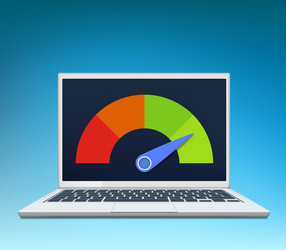Welcome to the gamer’s dilemma – you’re in the heat of battle, ready to secure victory, when suddenly, the dreaded lag monster rears its ugly head. If you’ve ever found yourself frustrated by sluggish gameplay, unresponsive controls, or the infuriating stutter of online gaming, you’re not alone. But fear not, fellow gamer, for this guide is your key to unlocking a smoother, lag-free gaming experience. In the realm of digital combat, your greatest ally is a robust internet connection. Join us as we embark on a journey to unravel the mysteries of bandwidth problems and discover practical solutions that will elevate your gaming prowess. Say goodbye to lag-induced defeats and hello to uninterrupted victories – it’s time to learn how to fix bandwidth problems for gaming.
How to fix bandwidth problems for gaming
You in the midst of an intense gaming session, and suddenly, lag hits like an unexpected plot twist. Welcome to the frustrating world of bandwidth problems. Let’s break down the basics.
Bandwidth Demystified
Bandwidth is like the highway for your internet data. It determines how much information can travel from the game server to your console or PC.
It’s measured in megabits per second (Mbps). The higher the Mbps, the smoother your gaming experience.
Role in Gaming
Bandwidth affects everything – from how quickly you see updates on your screen to the responsiveness of your controls.
In simple terms, it’s the lifeline of online gaming. Low bandwidth equals laggy gameplay; high bandwidth equals victory without the frustrating delays.
Common Causes of Bandwidth Problems
Now that we’ve set the stage, let’s dive into the potential villains causing your gaming headaches.
Network Congestion
Think of it as rush hour traffic on the internet highway. Too many devices competing for bandwidth can slow things down.
Identify bandwidth-hungry culprits like video streaming or downloads running in the background.
Read: Guide to the best esports gaming monitor
Insufficient Speed
Your internet speed might be the bottleneck. If it’s slower than a snail, gaming performance suffers.
Knowing your current speed is crucial. More on that in the next steps.
Impact of Bandwidth Issues on Gaming Performance

To truly grasp the importance of solving bandwidth issues, let’s explore the consequences of neglect.
The Lag Dilemma
Lag is the arch-nemesis of gamers. It’s that delay between your action and the game’s response – the bane of victories and the culprit behind countless defeats.
High ping, rubber-banding, and stuttering are the sidekicks of lag. Not the kind you’d want on your gaming team.
Missed Opportunities
In a fast-paced game, every second counts. Bandwidth issues mean missed shots, failed maneuvers, and lost battles.
Imagine trying to dodge an enemy attack only to find your character frozen – not the heroic move you were aiming for.
Now that we’ve set the scene and established the stakes, let’s move on to the practical steps of identifying and addressing your specific bandwidth issues.
Assessing Your Current Bandwidth
How to Check Your Current Internet Speed? To get to know you how to fix bandwidth problems for gaming
So, you’re gearing up for an epic gaming session, but first, let’s take a moment to understand the lay of the land – your current internet speed.
Choose Your Testing Ground
Before diving into the world of internet speed tests, ensure that no one in your household is engaging in bandwidth-heavy activities like streaming or large downloads.
Select a Reliable Speed Test Tool
Opt for reputable speed test websites such as Speedtest by Ookla, Fast.com, or Google’s Speed Test. These tools provide accurate readings of your internet speed.
Run the Test
Click that “Begin Test” button and let the magic happen. The test will measure your download and upload speeds, giving you a snapshot of your current internet performance.
Interpreting the Results
Focus on the Mbps (megabits per second) values. A higher number means a faster connection. Compare the results with the recommended bandwidth for online gaming, typically around 25 Mbps or higher for a smooth experience.
Tools and Websites for Bandwidth Testing
Now that you’ve got your speed test results, let’s explore some additional tools and websites to gain a comprehensive understanding of your bandwidth.
Ping Test
A good ping ensures minimal lag. Run a ping test to measure the round-trip time it takes for data to travel from your device to the game server and back. Aim for a low ping value.
Trace Route
Dive deeper into the network journey. A trace route shows you each hop your data takes, helping identify potential bottlenecks. Consistent, low-latency hops are the goal.
Quality of Service (QoS) Settings
If you have access to your router settings, explore Quality of Service options. This feature allows you to prioritize gaming traffic over other activities on your network.
Interpreting Test Results and Identifying Potential Issues
Results in hand, let’s play detective and uncover the hidden culprits behind your bandwidth blues.
- Consistency is Key: Consistent speed across multiple tests is a good sign. If your speed fluctuates wildly, it may indicate network instability.
- Comparing to Recommended Speeds: Cross-reference your results with the recommended bandwidth for online gaming. If you’re falling short, it’s time to explore ways to boost your internet speed.
- Ping and Trace Route Analysis: Analyze ping and traceroute results. Look for any unusual spikes, prolonged delays, or inconsistent patterns, as these could point to specific issues that need attention.
Congratulations, You’ve successfully assessed your current bandwidth, armed with valuable insights to tackle the next steps in optimizing your gaming experience. Let’s dive into the world of solutions and level up your gaming setup.
How to Check Your Current Internet Speed
Imagine this: you’re about to enter the virtual battlefield, ready for action, when suddenly, lag threatens to spoil the adventure. Before we gear up for battle, let’s ensure your internet speed is up to the challenge. Here’s your step-by-step guide to checking your current internet speed:
Prepare the Battlefield
Before initiating the speed test, make sure no one in your household is engaging in bandwidth-hungry activities like streaming videos or downloading large files. We want an accurate reading.
Choose Your Weapons Wisely
Select a reliable speed test tool. Websites like Speedtest by Ookla, Fast.com, or Google’s Speed Test are tried-and-true options. They offer accurate assessments of your internet speed.
Ready, Set, Test
Click that enticing “Begin Test” button and let the magic happen. The speed test will measure two critical aspects: download speed (how fast data comes to your device) and upload speed (how fast data goes from your device to the internet).
Inspect the Numbers
The results will be presented in Mbps (megabits per second). For optimal online gaming, aim for a download speed of at least 25 Mbps or higher. This ensures a smooth gaming experience with minimal lag.
Now, let’s talk a bit about these numbers.
Picture this: your download speed is like the speed of a hero rushing into battle, and your upload speed is the swiftness with which your victories are broadcasted to the world. A good balance is key for a seamless gaming experience.
Understanding the Numbers
Think of this as the speed at which your device receives information. A higher download speed means faster loading times, seamless graphics, and an overall smoother gaming experience.
Upload Speed
This is the speed at which your device sends information to the internet. While not as critical for gaming, a decent upload speed ensures your actions are broadcasted without delay. It’s like ensuring your victories are shared in real-time with your gaming allies.
Consistency is Key
Run the test multiple times to ensure consistency in results. If you notice significant variations, it could be a sign of network instability that needs attention.
Now that you’ve deciphered the language of Mbps and assessed your internet speed, you’re equipped with the knowledge to troubleshoot and enhance your gaming experience. Join us in the next step as we delve into the tools and websites for a more comprehensive analysis of your bandwidth.
Upgrading Your Internet Connection
Welcome to the chapter where we transform your digital journey into a seamless odyssey. If lag and slow internet speeds have been the villains in your gaming saga, it’s time to consider upgrading your internet connection. Fear not, for we’re navigating this upgrade quest together. Here’s your roadmap:
Know Your Battle Gear
Retrieve your current internet plan details. Check your monthly bill or contact your internet service provider (ISP) for specifics on your subscribed plan.
Identify the Mbps Warriors
Note down your current download and upload speeds. This information is crucial for understanding what you currently have and what you may need in the future.
Calculate Your Gaming Needs
Assess your gaming requirements. Are you a solo adventurer or part of a formidable multiplayer guild? Different games have varying bandwidth needs. Factor in the number of devices simultaneously connected for a holistic evaluation.
Consult with Your ISP
Reach out to your ISP and discuss your gaming needs. They can provide insights into available plans that align with your requirements. Inquire about any promotional offers or deals that might sweeten the upgrade.
Conclusion
As our gaming adventure concludes, we’ve explored the realm of attitude transformation, seeking the elixir to fix the ever-persistent attitude problems that may plague our virtual escapades. In the grand tapestry of gaming, attitude is the secret key that unlocks not just victories but a richer, more enjoyable gaming experience.

